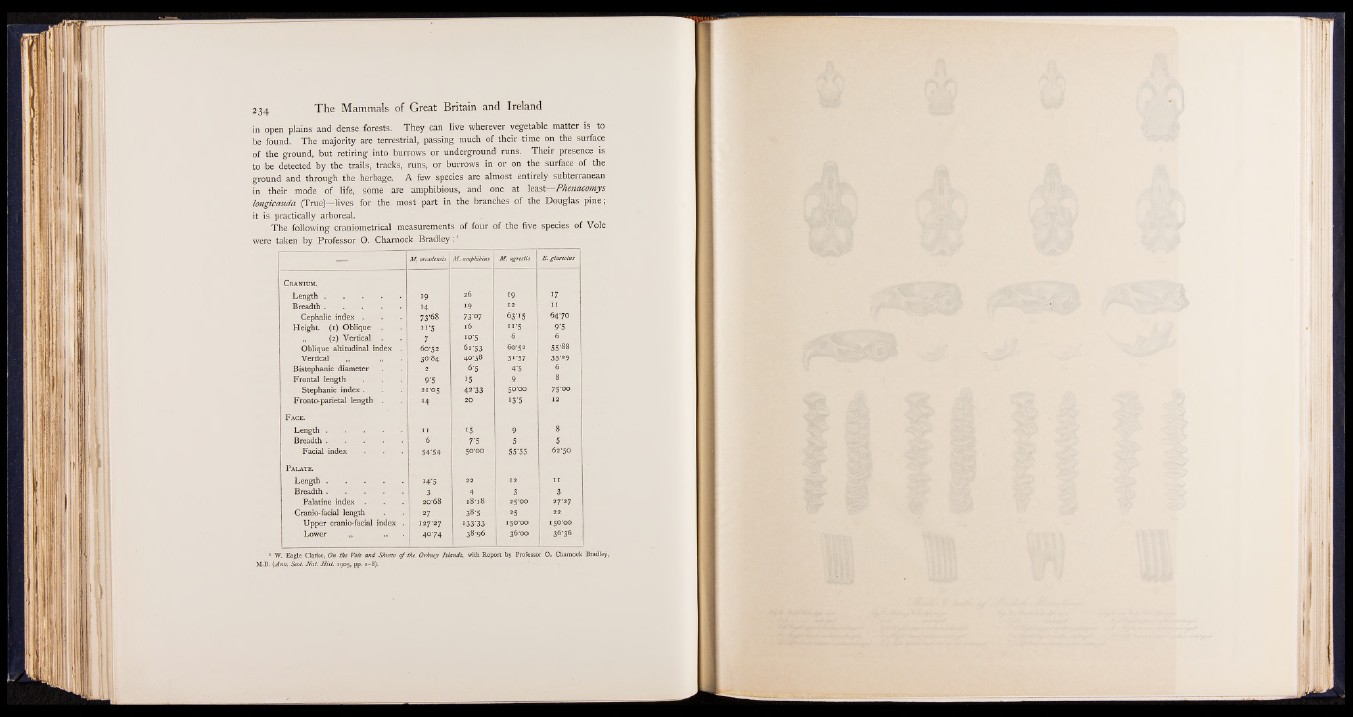
in open plains and dense -forests. They can live wherever vegetable matter is to
be found. The majority are terrestrial, passing much of their time on the surface
of the ground, but retiring into burrows or underground runs. Their presence is
to be detected by the trails, tracks, runs, or burrows in or on the surface of the
ground and through the herbage. A few species are almost entirely subterranean
in their mode of life, some are amphibious, and one at least—Phenacomys
longicauda (True)—lives for the-most part in the branches of the Douglas pine;
it is practically arboreal.
The following craniometrical measurements of four of the five species of Vole
were taken by Professor O. Charnock Bradley: 1
K 9 f l M. orcadensis M. amphibius if. agrestic E . glareolus
C ranium.
L en g th ..................................... 19 26 19 17
Breadth . . . . * H 19 12 I I
Cephalic index . . 73-68 73-07 63-15 64-70
I Height. (1) Oblique . | ” •5 l6 B 9 ‘5
„ (2) Vertical 7 I° ’5 B 6 6
Oblique altitudinal index 60-52 61-53 60:52 55'88
Vertical „ „ 36-84 40-38 31*57 35-29
Bistephanic diameter 2 6-5 4-5 6
Frontal length 9'5 15 9 8
Stephanie index . 21-05 42-33 50-00
Fronto-parietal length . 14 20 13'5 12 |
F ace.
L ength.................................... 11 15 9 8
■ Breadth..................................... 6 7'5 5 5
Facial index 54‘54 50-00 55*55 62-50
Pa la t e .
Length . . . . . 14*5 1Ë 22 12 11
U Breadth..................................... 3 4 3 3
Palatine index . 20*68 18-18 25-00 27-27
Il Cranio-facial length 27 fe 38-5 25 22
Upper cranio-facial index . 127*27 133-33 150*00 150*00
Lower „ „ 40-74 38-96 36*00 36-36
1 W. Eagle Clarke, On the Vole and Shrew of the Orkney Islands, with Report by Professor O. Charnock Bradley,
M.B. (Ann. Scot. Nat. Hist. 1905, pp. 1-8).